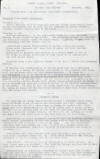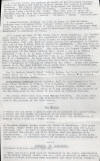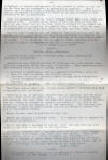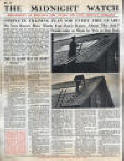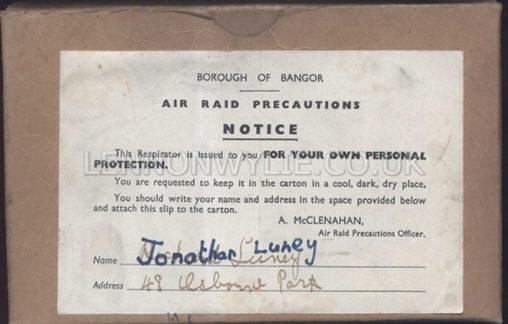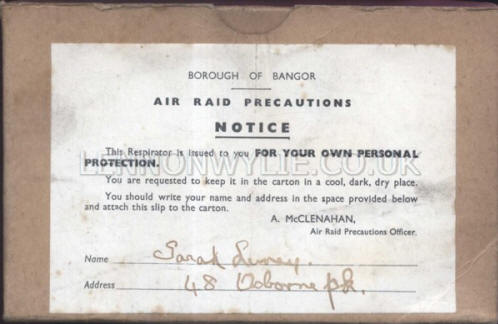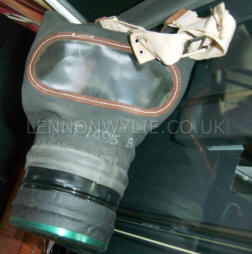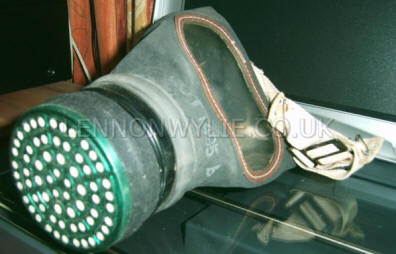|
LENNON WYLIE Home - 8th Belfast HAA Regt. - Useful Links WW1 & WW2 Memorial Pages
|
|||
|
WW2 related items
John Steele Bailie -
Sarah & Jonathan Luney Gas Masks
- London
Irish Regiment items on this page and all others are not my property and cannot be claimed or purchased STREET
DIRECTORIES TRANSCRIBED |
|||
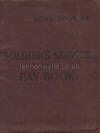
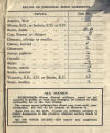
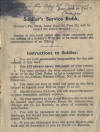


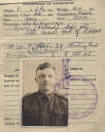 Soldier's Service and Pay Book for John Steele Bailie, Crosby Street, Belfast 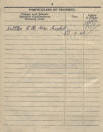




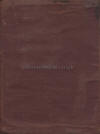 13028623 DOB 31st March 1905 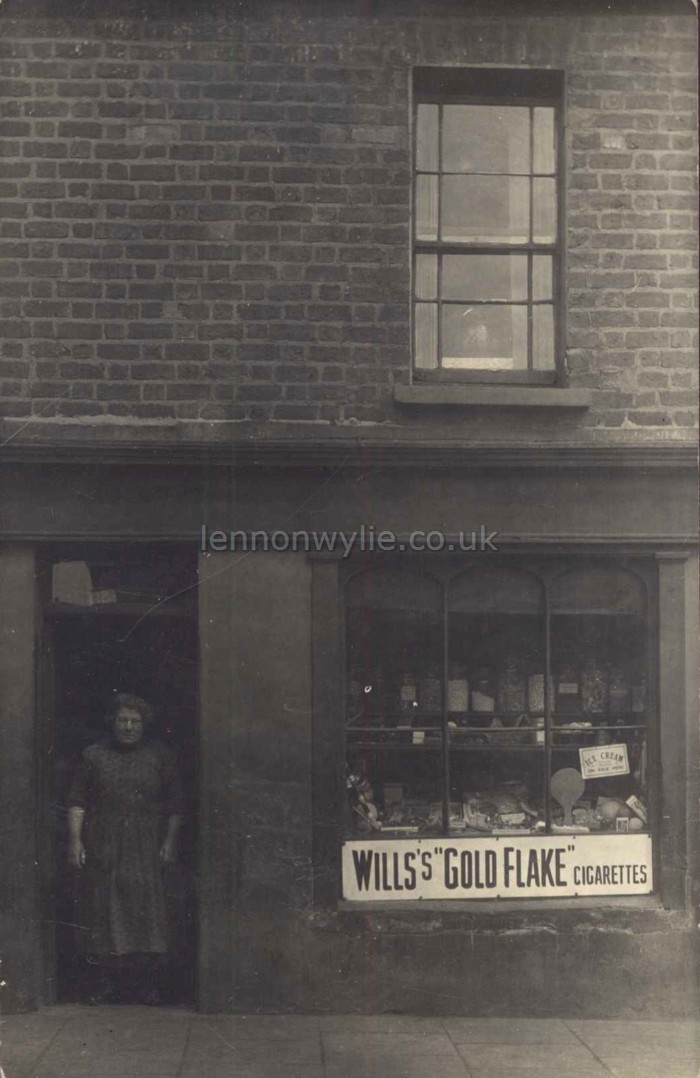
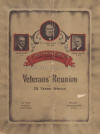

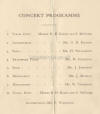
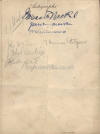
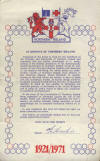 with above Soldiers Book Mackie's Veterans Reunion 1944 signed by Thomas F. Mackie 1921/71 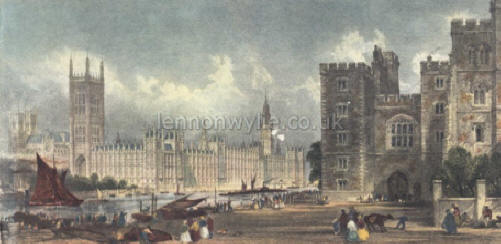
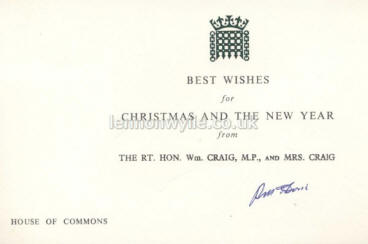 also includes a rent book for 24 Crosby Street for Edna Anderson 60's |
|||
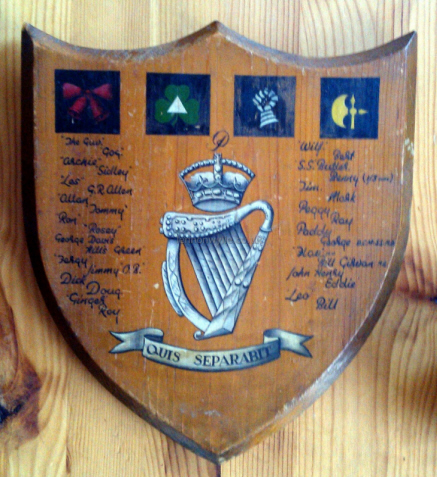 London Irish Regiment Quis Separabit
|
|||
|
|
|||
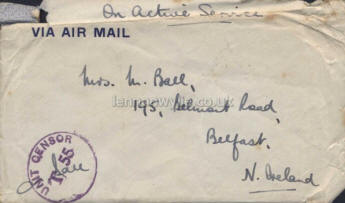

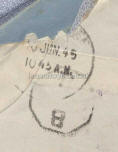 10th June 1945 from 312469 Lt.? Ball, A. T., English On Active Service to Mrs. M. Ball, 195 Belmont Road, Belfast, N. Ireland 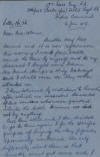
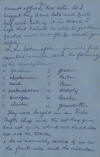
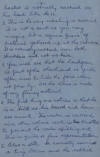
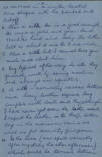
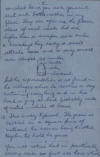
 A. T. Ball, Esq., R.A. 396/145 (Berks. Yeo.) Field Regt. R.A., India Command 6 June 1945 Letter no. 36 Dear Ma & Miss, Another day has dawned and it is now afternoon. This morning I went for a walk round the town by myself and to my discredit I bought some Indian Free French stamps, a thing I always said I should never do. They rather attracted me. I then returned by rickshaw to lunch after which we inspected the wares of two vendors who were parked outside the hotel. However we did not by anything. Bill White and I then decided to go to town again, I for the specific purpose of buying the clay figures I previously mentioned. The only difficulty about them is that Annette must get some and I cannot afford two sets. So I suggest they draw lots and pick half each, taking it in turns. I hope that I shall be able to get them packed well enough to reach you safely. On the bottom of them you will find an inked number and the following us the description:-1. gardener 2. washer man 3. maid 4. water carrier 5. sweeper 6. waiter 7. groom 8. tailor 9. peon? 10. orderly 11. barber 12. grass cutter They were bought in an Indo- Crafts Shop and the set they give does not quite show all the castes nor all the trades.
1. He is normally called by us as the fruitwala and
the circular basket is normally carried on his head like No. 12. You will notice in practically every case feet are
bare which is normal. With the exception of the postman, waiter and
orderly who are normally respectably clad, all the others are in rags.
The maid - well it depends on her job how she is dressed. I think this
is about all I can tell you about them. The mail truck has just come
up so we are hoping. |
|||

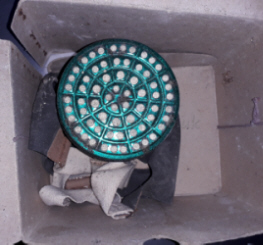
 James and Bella McCarroll, Ballynafie, Portglenone 13.9.39 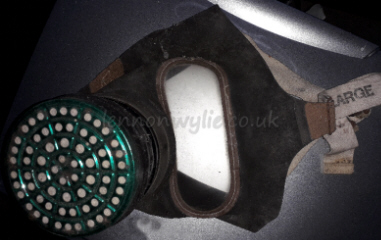

 |
|||
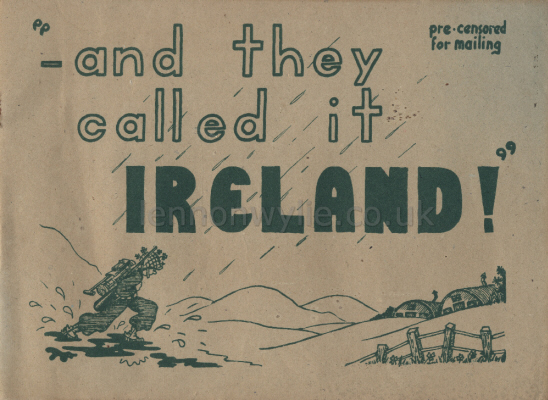 " - and they called it Ireland!" 






 





 




 To The Irish - Begorrah! THIS BOOK is respectfully dedicated because they have done so much to make us feel at Home - away from Home and now we'll tell you about The place - Once upon a Time - Irish balladry explains that some careless angels let fall "a little bit of Heaven" which settled on the surface of the Atlantic Ocean," and they called it Ireland . . . Many centuries have passed since that celestial accident and after a belligerent historical background Ireland in 1921 became divided into the twenty-six independent counties of the Irish Free State or Eire, and the six remaining counties of Northern Ireland, with which we are concerned, and which are still under British Sovereignty. So when World War II began, Northern Ireland swore her allegiance to Britain and went all out for Victory! THEN - came the YANKS with everything, including the kitchen stove. WE DISPERSED throughout the Countryside and SETTLED as much as the Army Overseas ever Settles Down. THE CUSTOMS were a little strange - it was hard to get used to driving on the left side of the road - and what roads! we learned to drink tea in self-defence - (the British have the oddest conception of coffee!) But the NATIVES were Friendly! "sure the Blarney in her talk took you back to old New York" and we SOON got Acquainted when in Ireland, do as the Irish (but remember they've been doing it for years!) we learned to do the Irish Reel. until even MARKET DAY didn't amaze us. We took a DIM view of the BLACKOUT: Went to the VILLAGES often or took a WEEK-END pass - and fought the BATTLE of BELFAST" where we ran into the NAVY the AIR CORPS & WAGS etc. but wherever we went there was the RED CROSS and the indefatigable hostess however we were here for a PURPOSE so TRAINING was more rigid than usual and now we're PREPARED for ANYTHING to hasten PEACE. |
|||
|
|
